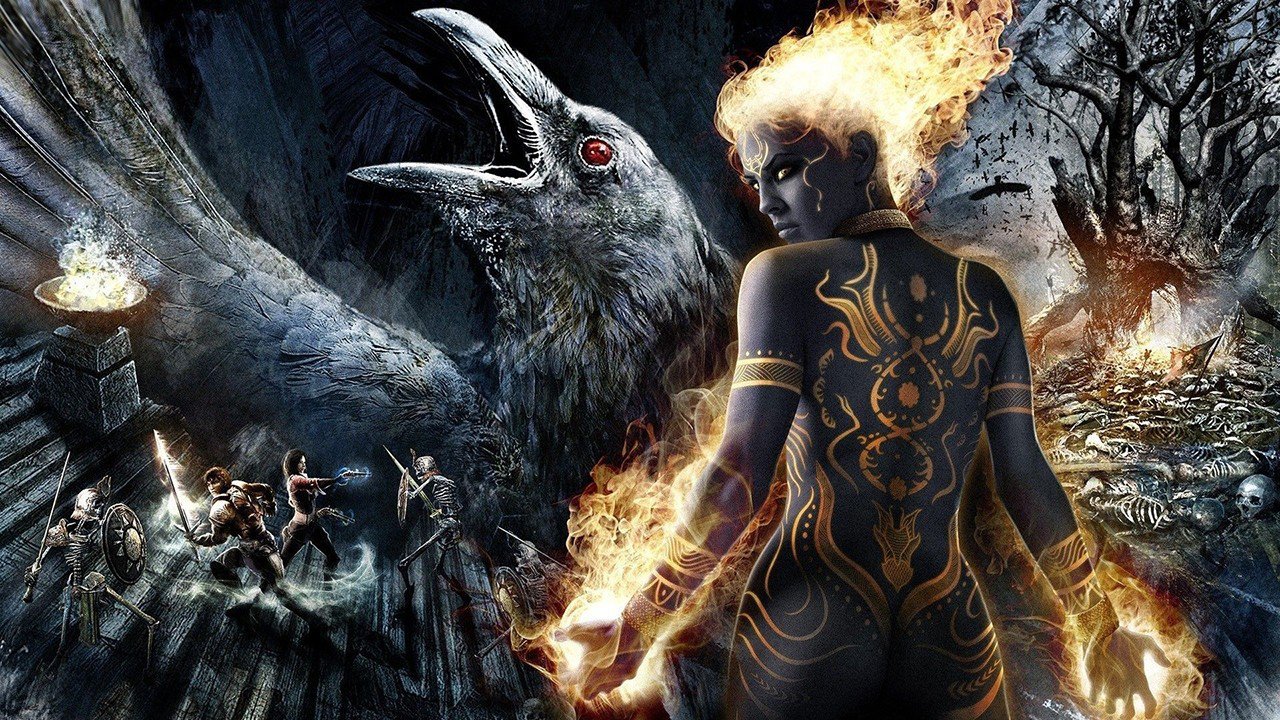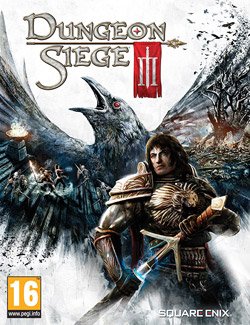Another Early Crest In The Diablo Wave
The big tsunami for an entire genre, Diablo III is still gathering momentum somewhere out in the sea of game development, but there are plenty of titles attempting to fill the dungeon crawling void until it comes in. The indie hit Torchlight is one example, the recent Dungeon Hunter: Alliance was another and now, with mild surprise, we have the arrival of Dungeon Siege III, a series best known as an action RPG for the PC that now finds itself on the PS3 and Xbox 360 as well. In making the transition to consoles, it also jumps into the age of modern multi-player, and it succeeds on all but one of the most important fronts.
Join The Legion. Run For Your Life.
Dungeon Siege III is a separate, entirely new adventure that takes place in the same world as the first two games, but 150 years later, with little past knowledge of the franchise required to play the game. The 10th Legion is a combination of military unit and semi-ruling authority over a small kingdom, until they are all but annihilated by a woman known as Jeyne Kassynder, “the living saint.” The players choose characters to take up arms and the expected epic quest begins.
As dungeon crawlers go, Dungeon Siege III holds up well, with colorful, detailed art direction, although the PC version looks cleanest and sharpest. The console versions can struggle somewhat in the framerate department during heavy environmental scenes, such as when players arrive at their first city, Stonebridge, and chugging occurs as the buildings give Obsidian’s custom Onyx engine a workout. Happily, this isn’t the case where it counts most, which is combat. A ridiculous number of particle effects, lights and enemies can all be on screen with four players simultaneously and there’s nary a hiccup. The audio side of the game also holds up well. While the vocal performances are uneven, ranging from competent to somewhat flat, there’s no terrible performances anywhere. The music is appropriate to the setting with the expected soaring orchestral compositions, and the combat effects come fast and hard, though it’s not quite the surround sound experience of a first person shooter. Don’t expect your subwoofer to work a lot on this one if you’ve got an elaborate sound set-up.
Yup, It’s A Dungeon Crawler
If anyone is waiting patiently for a release date on Diablo III, then the short version of this review is; this will keep you quite happily occupied in the meantime, with one glaring caveat. Anyone familiar with the genre is venturing into well known territory here. You pick one of four characters, you wander various dungeons, you kill things, you get experience points and you get loot like weapons, armor and accessories. This is the basis of the genre, and Dungeon Siege III covers all the basics more than adequately.
The four available characters are all distinct, and though any one of them can be used in solo play, there are obvious, desirable combinations, usually involving Lucas, the only pure melee character, and someone else. Each character has two “stances,” which in the case of the other three means longed range and close range styles and in the case of Lucas, means a more defensive sword/shield combo versus the more damaging two handed sword. They each have enough variety and uniqueness that any player will likely find a favorite.
A minor disappointment on the character side is the RPG component. Characters do get XP and they do level up, getting to choose new skills, but the skill sets and player progression are not as comprehensive as more recent titles like Borderlands or the Dragon Age series. Granted, this is an action-RPG, but then so is Borderlands, and that gave players the option of dropping points into specific attributes, whereas here, attribute progression is dependent entirely on the gear equipped.
In terms of loot, which is the heart and soul of a dungeon crawler, Obsidian have handled things intelligently. A lot of features for loot and its management have previously appeared in games going as far back as Diablo II to more modern loot-fests like the recent Dungeon Hunter: Alliance. Loot is color coded to indicate value and rarity, and inventory management has the much appreciated “transmute” feature that allows players to sell equipment on the fly, but at a lower cost than if they’d taken it to a merchant in town. Loot is randomly generated, so aside from a few, fixed, story-related items here and there, opening a chest—even after something like just reloading to the last checkpoint, can yield radically different results.
In general, the gameplay is also up to the task of handling dungeon crawling duties. The controls are responsive, there are some nice interface touches, such as players being marked out by a colored circle on the ground to better keep track of position during hectic fights, and the difficulty always manages to provide a distinct challenge without feeling unfair. You can play the game either solo, with an AI companion, or with friends locally or online, but the game is clearly designed as a co-op experience. Solo play works, but the balancing of the game and the tactics available for use clearly are meant to be experienced by friends playing together. And this is where Obsidian dropped the ball.
In local co-op, the game is for two players only, and this mostly works, except for the irritating design decision to not give individual players individual menus. In Borderlands for example (which, is a split-screen game in local co-op; Dungeon Siege III shares the screen between two players) player one can open up a menu at anytime while player two keeps right doing whatever they’re doing. In Dungeon Siege III, the entire game is paused for both players. That minor annoyance is nothing however, compared to when you try to take your experience online. Only the host player keeps their character progression. That’s right, if you get invited to someone’s game, play for two hours and go back to your own game, all that XP and loot you just acquired is gone. It effectively kills any reason for friends to get the game so they can play together online. Borderlands, once again, has already shown this kind of online player progression is possible, and more baffling still, Diablo II got around this by simply forcing players to create a specific, designated, online multi-player character that was separate from the offline campaign. Why Obsidian didn’t implement either solution when both of them have been known and available for sometime now is a mystery. And it’s a shame, because the online infrastructure for playing Dungeon Siege III is actually fantastic, with nice touches such as AI taking over for players when they open up menus, or a “take a break” option in the menu for players to manually implement the same mechanic when they need to take a bathroom break. In every way, Dungeon Siege III is technically geared for a great, online, multi-player experience, except that there’s no point in using it outside of the occasional high-level character helping out a newbie.
Dungeon Siege III was almost a fantastic multi-player experience. Even as is, the solid game mechanics provide a lot of fun for solo and local co-op players. In that sense, I say go out, get it and you won’t have any regrets with this very good Diablo-style dungeon crawler. But it is far from a “complete” package as Obisidian hamstrung themselves by making online play essentially meaningless. If you don’t plan to play online however, this is a very good game.






